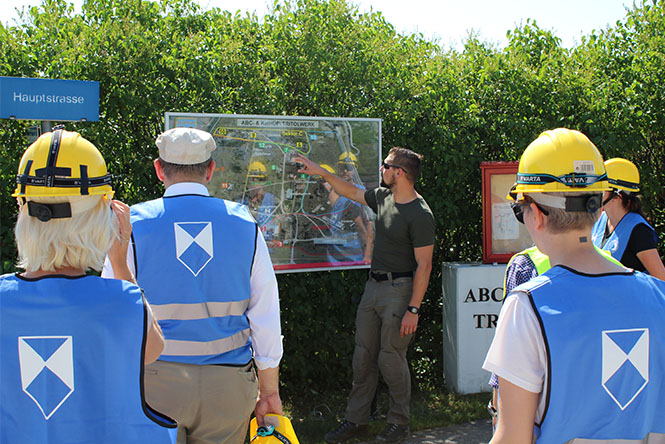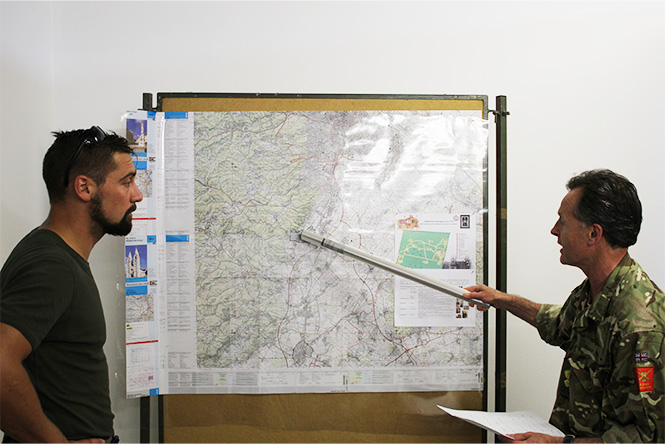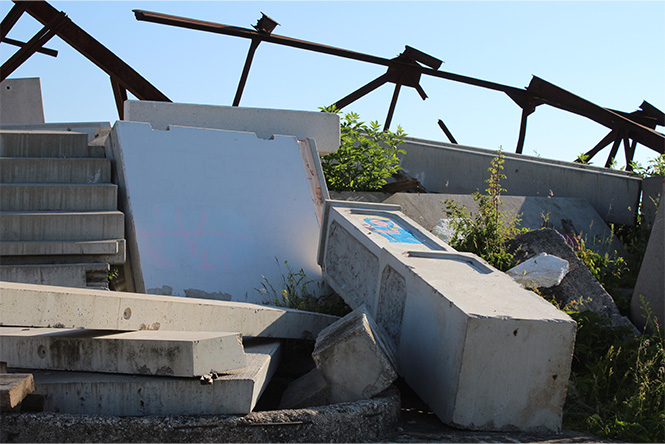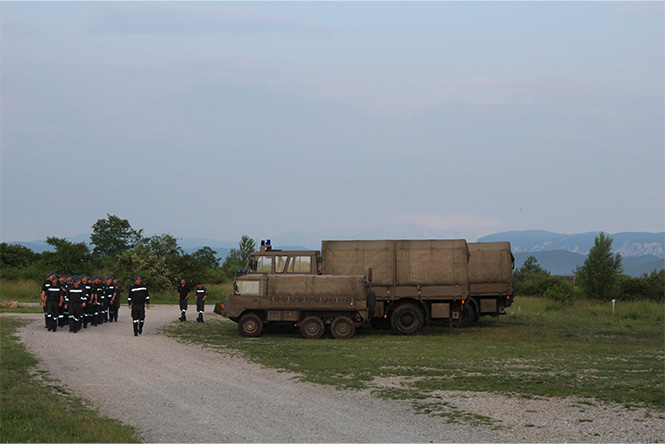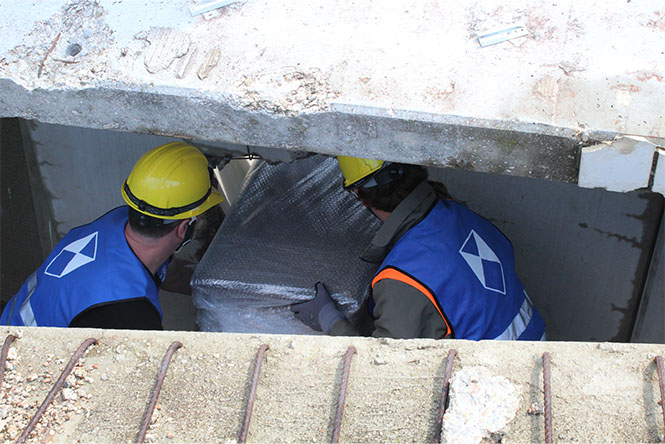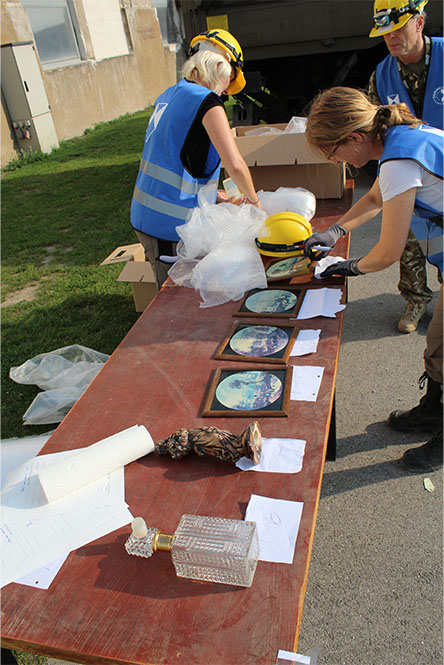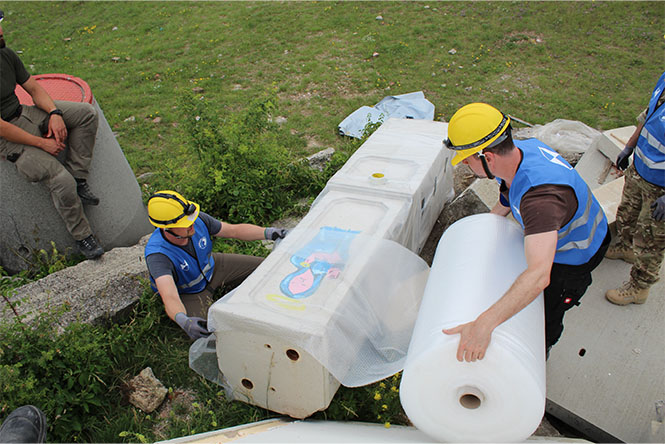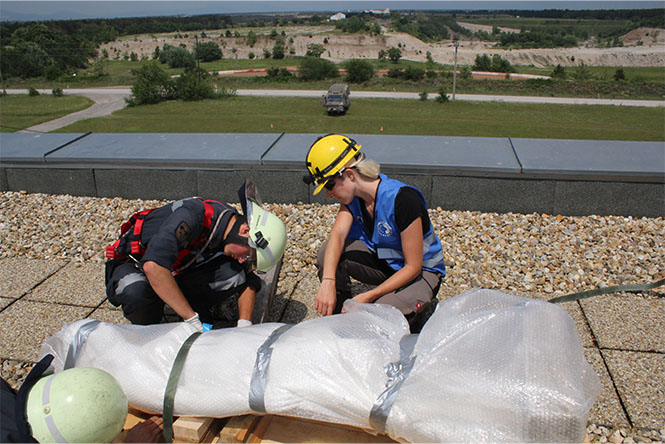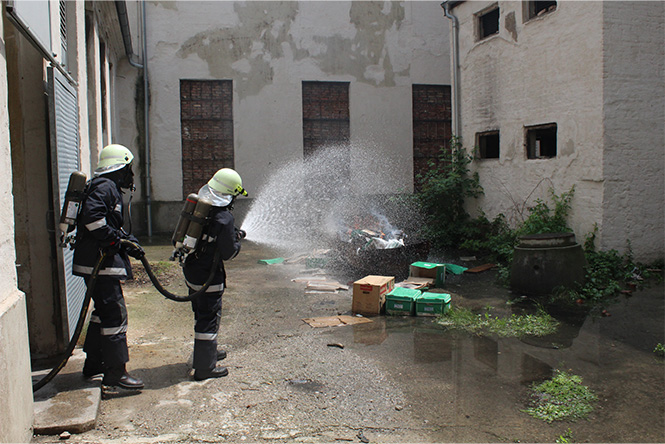On 26 May 2018, 14 participants from Austria, Croatia, the UK, Italy, Romania, Switzerland and the US met in eastern Austria for the TRITOLIA18 Cultural Property Protection Exercise. The aim of the exercise was to recover cultural property after an earthquake and to develop skills in working with rescue units - in this case, the Austrian Armed Forces Rescue and Recovery Unit. The majority of the participants were familiar with cultural property protection tasks and were therefore able to contribute their different expertise in the rescue and handling of cultural property.
The exercise was organised as a joint event by the Danube University Krems and the Second NBC Defence Company of the Austrian Armed Forces as part of the ProteCHt2save work package T3, which focuses on rescue teams and training opportunities for the protection of cultural heritage. The Austrian Armed Forces' Tritolwerk training area is an old ammunition factory dating from the First World War, which has recently been converted into a training area for worldwide rescue missions. This offers the advantage of being able to practise real-life scenarios, but in a protected environment. For this exercise, the Tritolwerk was transformed into a fictitious imperial summer residence. The significance of this fictitious summer residence, Burg Tritol, can be seen as an analogy to the Austrian UNESCO World Heritage Site Schönbrunn Palace in Vienna.
Day 1
A virtual earthquake measuring 5.8 on the Richter scale shook the eastern part of Austria on the morning of 26 May - that was the start of the exercise. It began with briefings on the Austrian Armed Forces' approach to such situations and the decision-making process. The participants were then divided into groups to work out possible scenarios for the rescue and recovery teams that would be alerted to protect cultural property. In this fictional scenario, people were being rescued and evacuated from the earthquake region. The three teams had to report to the Commander of the NBC Defence Command on the possible deployment of the Rescue and Recovery Unit. In the end, it was decided to move the unit from Mautern to Tritol Castle. This was the end of the first day and the theoretical exercise.
Day 2
On the second day, the teams were sent to Tritol Castle as heritage assessment teams. There they reviewed the contingency plans they had developed and discussed the deployment of the rescue and recovery unit, which was due to arrive in the early hours of the third day.
Of all the different types of cultural artefacts in Tritol Castle, a statue on the roof of the castle, an ancient bust in an underground lapidarium, a portrait and a chest both completely buried under the collapsed concrete structure, and a heavy wayside shrine with an ancient and very rare fresco could not be recovered by the teams themselves, but required the heavy equipment of the Rescue and Recovery Unit.
Valuable furniture, the astronomical and papyrus collections and other paintings from the portrait gallery were recovered by the heritage teams themselves.
The second day ended with a planning session for the third day's evacuation and a lecture on how to organise the inventory on site and how to handle the recovered materials. Cristina Collettini, from the Italian Ministero dei beni e delle attività culturali e del turismo, part of the Lazio crisis unit, and Major Luigi Manusco, from the Carabinieri Tutela Patrimonio Culturale, shared their experience and knowledge of working in an earthquake scenario. Both thankfully linked the exercise to real-life scenarios such as the recent earthquakes in Italy.
Day 3
At 6am on the third day, the Rescue and Recovery Unit arrived at Tritol Castle to recover the cultural artefacts and began the usual procedures for arriving in a crisis area and preparing for their work. This included setting up a staging area in case of aftershocks. The platoon leader was briefed by the heritage experts, who were no longer divided into three teams, but were brought together as one expert group. The group took over the assigned sites from their Cultural Property Protection Commander, Kimberly Himmer, a game designer and former US Navy officer. Working at several sites in parallel ensures that cultural artefacts can be recovered quickly. The cultural property managers and the military units ensured the recovery of the most important pieces of the castle's collection and the imperial family memorabilia at their various locations. Among the items recovered was the archive of the former imperial family, which was damaged by a fire that broke out during the recovery operation. The fire was quickly extinguished by the fire brigade, but the damp archive material had to be treated - another surprising task for the participants, which was expertly carried out.
The recovered items were packed on site and taken to the inventory station, which was professionally managed by Cristina Collettini. Cristina Collettini made sure that all items could be assigned to the place where they were found, while they were stored or moved to a safe place.
The first priority of the Austrian Armed Forces Rescue and Recovery Unit is to rescue people trapped in collapsed buildings and to recover dead bodies, animals and material assets. Material assets can be, for example, cultural artefacts. The objectives of the military personnel were to add value to the NBC defence, logistics and engineering elements by developing in-depth knowledge of cultural property protection and post-disaster cultural property handling, and to learn how civilian cultural property protection experts can be integrated into military structures.
Participants in the exercise were challenged to work with the military command to help make decisions, assess risks to movable and immovable cultural property, work in crisis teams, and coordinate the recovery of cultural property in close cooperation with the soldiers of the Rescue and Recovery Unit.
The ProteCHt2save project started - ahead of schedule - with the TRITOLIA18 exercise, Work Package 3, which deals with cultural property protection teams and their training, and will continue with the development of a one-week training programme for civilian experts and emergency units for the recovery of cultural property after natural disasters.
Impressions of the CPP Exercise
Queries
Tags
